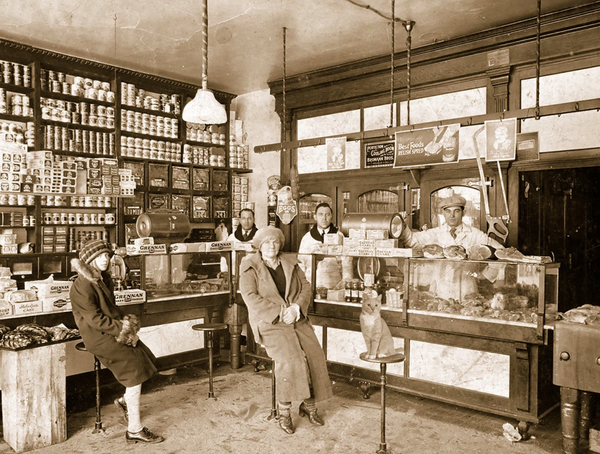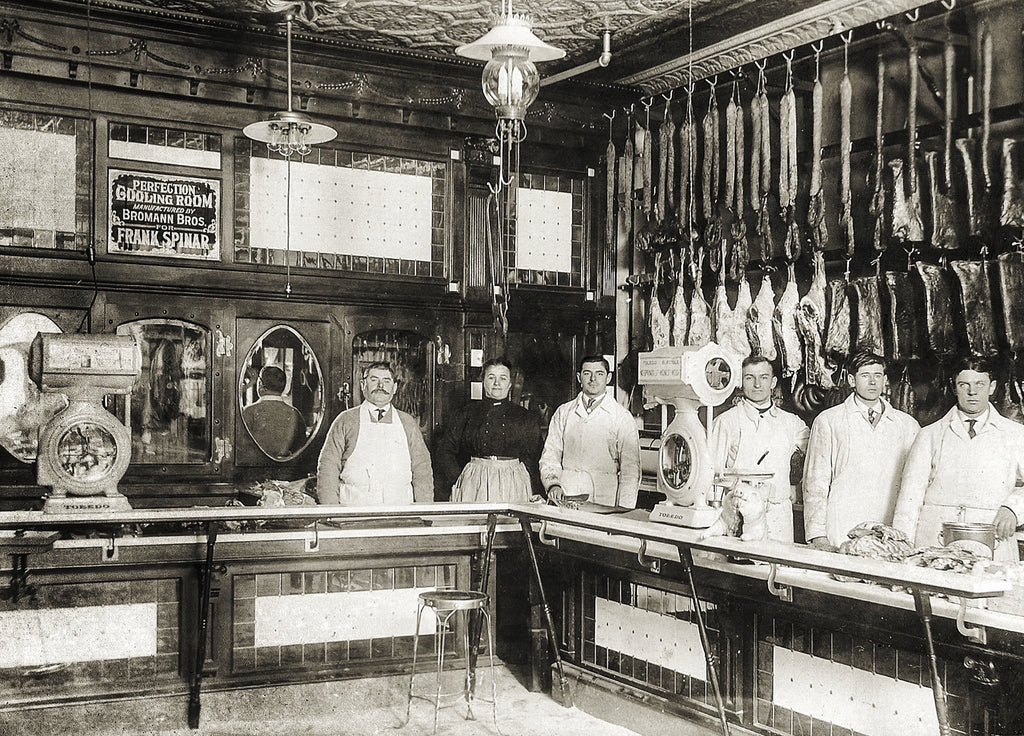Germany in the 1850s was a pretty tumultuous time with stark battle lines being drawn between Conservative methods of achieving national unification by force and Liberal attempts for unification through diplomacy - the crown verses the parliament. Within the violence and turmoil, there managed to be a burst of economic growth thanks to the rise of industrial capitalism. By the 1860s, anyone who could afford to leave the area for a better life elsewhere, did. That brings us to the Bromann family.
From Bavaria to the New World
So we find Heinrich Bromann living in Bavaria, Germany deciding to leave his wife and 3 boys in 1869, bound for America. As a cabinet-maker by trade, he successfully worked here in the United States settling into Chicago. In 1871 his wife and 3 sons joined him and by 1886 he and his sons were producing display cabinets for neighborhood stores out of their shop at 857 Fulton Street in Chicago (corner of Peoria and Fulton, now). In 1887 Heinrich passed away and his 3 sons continued the business, growing into the 1900s eventually employing about 20 people.
See the beauty of a Bromann Bro's cabinet in our shop

A Cold New World
The Bromann Brothers ended up making a name for themselves creating cooling rooms for local butchers and meat distributors by lining rooms with insulated oak panels, trimmed with mirrors and marble. In the 1930s the Bromann started making refrigerated cabinets, holding several patents on the mechanics of it. The look and style of these display cases are pretty much the same that we see in delis and meat counters today. In the 40s and 50s, the company returned back to their cabinetry roots and finally closed their doors in 1976.

Check out this stunning Bromann Bros display case with milk glass tiles
Up and down the meatpacking district on Fulton Street, around Chicago, and up to Milwaukee, Bromann Brothers crested their Perfection Cooling Rooms with these reverse-painted glass signs. With the sparkling gilding and glass reflection, they caught the eye while advertising the quality of the cooler to each customer as they walked through the door. These signs are not easy to come by in this condition. Most have the paint worn off are have been broken. The only one's that remain in mint condition are the ones still installed in their original location for over 100 years.

Here's Your Sign
Fortunately for you, dear reader, you don't have to bribe a property owner to get your hands on a fantastic part of Chicago history. This 18" x 12" mirrored-back glass sign can be found in our shop.
The younger brother is a smaller 12" x 6" reverse painted glass sign with silver gilding, and can also be found in our shop. Both of these signs were used from the 1910s until the late 1920s are in remarkable condition.
Let us know if you need help getting rid of old antique signs









Leave a comment